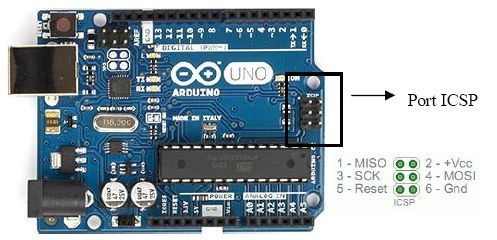Komunikasi Serial Arduino

Oct 13, 2018 - komunikasi serial arduino uno pin For eidprodukter or services that are available without logging into an account, this Privacy Policy applies to. Komunikasi serial arduino dengan menyalakan 1 led Sebelum kita membuat suatu program rangkaian,kita harus mengetahui dasar dari komunikasi serial,berikut ini saya akan membahas apa itu komunikasi serial serta fungsinya terlebih dahulu sebelum melanjutkan ke pemograman.
> > 04.Communication > MultiSerialMega MultiSerialMega Sometimes, one serial port just isn't enough! Primary program na visual foxpro file. When trying to communicate with multiple serial enabled devices, while also sending info back to the main serial window, a few extra RX/TX ports can be a welcomed thing. This example makes use of one of Arduino and Genuino Mega's 3 auxiliary serial ports, routing any incoming data read on that connection straight to the main TX line, and, in turn, to the main serial window for you to view.
Hardware Required. See Also • () • () • () • () • - Demonstrates Arduino's advanced serial output functions. • - Move the mouse to change the brightness of an LED. • - Send data to the computer and graph it in Processing. • - Send MIDI note messages serially. • - Turn a LED on and off by sending data to your board from Processing or Max/MSP. • - Parse a comma-separated string of integers to fade an LED.
• - Send multiple variables using a call-and-response (handshaking) method. • - Send multiple variables using a call-and-response (handshaking) method, and ASCII-encode the values before sending. • - Demonstrates the use of SerialEvent(). • - Send multiple variables from Arduino to your computer and read them in Processing or Max/MSP. Last revision 2015/07/29 by SM.
Following on from the post, if you do not have a FTDI serial adaptor you can use an Arduino. Here is how to set up the Arduino to talk to the ESP8266. I an using a 5V Arduino Nano which of course is 5V. The Esp8266 is a 3.3v device and so I am using a voltage divider to bring the Arduinos 5V down to 3.3v. If you are using a 3.3v Arduino then you do not need the voltage divider.

The wiring is very similar to the FTDI. Arduino pin 3 to voltage divider and then to ESP8266 RX Arduino pin 2 to ESP8266 TX Arduino GND to ESP8266 GND Pull CH_PD HIGH with a 10K resistor to +3.3v +3.3V to vcc You only need the voltage divider on the Arduino TX pin. The 5V Arduino will read 3.3v as HIGH so you can connect the ESP8266 TX pin directly to the Arduino RX pin. Make sure the ESP8266 has enough current. If it does not it may keep resetting and may not broadcast a signal. Arduinos cannot supply enough current and you should use a separate power supply.
While experimenting I use a bread board power supply. I am using a simple serial in, serial out sketch. Hi Chris, You are correct, the ESP8266 can draw up to 300mA which is too much for the Arduino. My test projects were all done on a bread board and I used a bread board power supply which can be set to output either 5V or 3.3V. You can see the set up in the FTDI + ESP8266 post – For a permanent project I would use an external power supply (I have a lot of the 9V ones you get with many of the Arduinos). This would give power to the Arduino and also 3.3V, via a regulator, to the ESP8266. I have also started to use small buck convertor power supplies quite a lot.